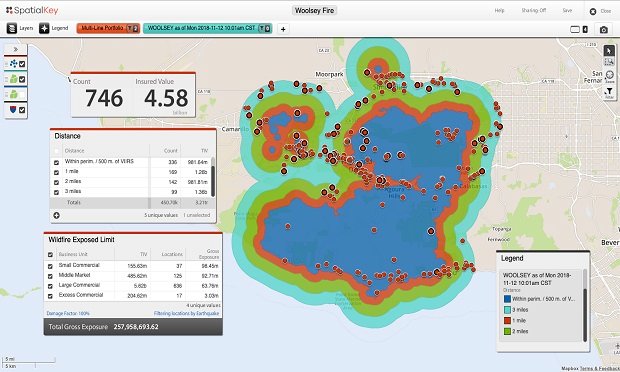It's generally accepted that the first written insuranceagreement was established with the Hammurabi code. It took quite awhile—over 3,000 years—before humankind could establish enoughunderstanding of risk transfer and mathematics and analyze enoughdata to develop the first actuary tables in the late 1600s. Sincethen, the sophistication within every part of the risk-sharingprocess—from rate-making to underwriting to claims—has increased ata quickening pace, driven by greater precision and predictabilityand built on an ever-expanding amount of data.
|But despite the industry's developments associated withcross-company information sharing—bureau rates, claims databases,and so on—there has long been competitive advantage to be gained by the amount of data aninsurer could collect in order to fine-tune rates and underwriting,support new products, and carve out new market niches. It was amodel that favored companies with larger books of businessgenerating more data and with more staff resources available forinformation collection to establish greater certainty aroundpredictability.
|However, an explosion of new data sources is turningthat model on its head. "There is more data, and more access todata, than there ever has been—and it's growing," says MatthewJosefowicz, director of insurance at Novarica. "Geocoding,geographic information sources, aggregated consumer information,commercial databases, credit scoring, property peril scoring;detailed dossiers on individuals and businesses—there's a massiveamount of information that can be obtained on individuals andbusinesses simply by searching the Web."
|In this new environment, there are fewer competitive advantagesto be gained from the amount of unique information an insurer cancompile itself. "We're evolving from a time when insurers needed tobe fantastic hunters with a simple digestive system to one wherethey're almost being force-fed data," says Josefowicz. "Thechallenge is: How can we evolve our organization to spend fewer ofour resources on duplicating the effort of data entry, and insteadhandle that data more effectively?"
|ACUITY—a $2 billion regional property-casualty insurer doingbusiness in 20 states—sees the data explosion as force it canleverage to gain advantage against national insurers that havebuilt much larger internal data stores.
|"Today, we have access to a volume of data that we could neverhave compiled on our own," says Ben Salzmann, ACUITY president andCEO.
|Ed Felchner, vice president of personal lines and marketing atACUITY, illustrates that point with an example from propertyinsurance underwriting. "The problem before was that data onproperty risks was scattered. The information might have beenavailable, but we'd have to go to 30 different sources to get it,"he says.
|"If we wanted topographic information about a tract of land abuilding was on, we would get it from one location. We wouldgeo-locate using another application. We could go online toassessors' offices to get additional information. Those multipleprocesses are hard to do individually on every account, and we needthat information right now, so we can use it in the quotingprocess. Today, with the advent of different companies aggregatingthis information, we can get it in one shot," Felchner adds.
|The buffet of information ACUITY samples includes many namesyou'll find on today's menu of sources: LexisNexis for analyticsand policy prefill; Dun & Bradstreet for commercial informationand financial stress scores; credit bureau data and financialresponsibility scores. ACUITY also uses a motor vehicle record"push" service to update driver records and discover new drivers inthe household automatically. And the company is testing a propertyinformation solution that aggregates available data on propertyrisks and provides a peril-scoring system based on predictiverelationships.
|ANALYZE THIS!
|But is the amount of information available today too much forinsurers to digest? No, says William Dibble, senior vice presidentof the national claims operation at Infinity Property and CasualtyCorporation (IPACC). "There isn't too much data out there. You justneed to understand what data you already have in house, what datayour vendors in various processes might be collecting, and thenhave the skills and technology to use it," he says.
|"An insurer's core asset is no longer data gathering; it's theirability to handle data when that's received," says Josefowicz. "Thechallenge for insurers is how do you take advantage of data toprice better, expand your market, and improve the business ofunderwriting risks and handling claims."
|Mo Masud, senior manager in Deloitte's advanced analytics andmodeling practice, says that the exponentially increasing amount ofdata to process, comprehend, and react to is one of the key trendsbehind the adoption of predictive analytics. "The drive foroperational efficiency and the reduction in expense ratio has madethe application of predictive analytics in day-to-day operationseven more critical," he says.
|Performing detailed, multivariate analysis in thisinformation-rich environment requires a specialized combination ofskills covering data management, statistical analysis, data miningand modeling, and strategy. Those skills need to be coupled with anunderstanding of both business processes and technology and with anatural curiosity to keep looking for relationships that can leadto predictability.
|"Insurers may have the skill sets in analytics, but those skillsare often localized in actuarial or departmentalized forunderwriting or claims. The greatest challenge is extending thoseskills at an enterprise level," says Masud.
|The next objective for insurers is turning analytics intoactionable information. "You need quality data, a scoring engine totake the risk attributes and apply a score, and a business rulesmanagement system to take the score and translate that into anaction, price, or claims outcome," Masud says.
|"We knew our large data stores could provide meaningful insightsthat would help select accounts and price products to improveprofitability and retain customers. The greatest challenge lies inextracting, understanding, analyzing and presenting it in a usefulway," says Ned Wilson, vice president of treasury and planning ofFCCI Insurance Group.
|FCCI, which writes workers' compensation and other commerciallines, looked to analytics to bolster the bottom line. "Likeeveryone else, we're trying to improve our account selection andperformance. With a massive amount of data, we believe there's veryvaluable information in that data to allow us to pick up a couplepoints on the combined ratio," Wilson says.
|The insurer began its analytics initiative by retaining aconsultant, but was unhappy with the results. "The skill sets andunderstating of insurance weren't there with the consultant wechose," Wilson says.
|Instead, based on its experience with SAS data warehousing andanalytic products, the company decided to tackle the initiativeitself and deployed SAS Enterprise Miner in early 2010. Wilson'steam joined forces with underwriting and in-house actuaries tofirst examine existing policy and experience data to create pricingand selection rules, starting with workers' compensation. Theanalysis will be expanded to commercial auto and general liabilityin late 2011.
|FCCI appended commercially available data, such as from Dun& Bradstreet, to its warehouse. "We checked our assumptions anddetermined which data elements generated the most predictiveresults," Wilson says. "Some confirmed our expectations—thefinancial stress score can help predict business failure and thePaydex score can predict timeliness of premium payment. But otherresults have been surprising, such as correlations betweendifferent account sizes and profitability."
|FCCI then worked to turn those understandings into actionableinformation to use in day-to-day decision making. "Enterprise Mineris a powerful tool, but the challenge for us is to communicate thatin non-statistical terms to the underwriting staff. It's a teachingand communication challenge," Wilson says.
|The insurer uses components of Enterprise Miner to illustratepredictive factors and guide underwriting decisions. "The goal isto avoid making blanket statements of 'don't write this account.'Instead, we provide underwriters information in the rating modelthat they can drill into that shows the unique characteristics ofan account that caused a concern," says Wilson.
|For instance, underwriters might obtain detail that a particularcombination of class code, account size, location, and Paydex scorehas shown to be a predictor of poor account experience. "Theunderwriter can go back and communicate with the agent either toget the price we need or to address the concerns," Wilson says. "Itallows us to squeeze insight out of information that no individualunderwriter could get their arms around because it's the result ofan aggregation of an incredible amount of data."
|Wilson says it's too early in the deployment of Enterprise Minerto determine if the company's combined ratio goals are beingachieved. "Our underwriters do a very good job, which makes itchallenging to fine-tune our underwriting results. But there issome fruit that can be picked, and ways we can improve our riskselection and pricing to attract customers while being moreprofitable."
|AUTOMATION SPECTRUM
|In a data-rich and ultra-competitive market, leaders will becompanies that not only best digest the amount of informationavailable, but also deploy integrated analytic solutions at thefront line. This can include providing decision support, such as atFCCI, or through full automation of the decision process.
|As is the case with other areas of insurance automation, thepush to automatically extend analytics started in personal lines,where there is greater homogeneity of information. "A few yearsago, just having an analytics solution would give companies acompletive advantage in personal lines," says Masud. "As the marketgets saturated with more companies using analytics, the advantagewill be achieved by companies who can best execute and use thosetools in day-to-day operations. Leading companies are those thatare using analytics to establish a large number of price points towrite a wide variety of risks."
|ACUITY, which does business exclusively through independentagents, has seen the benefit of analytics-based precision pricingin personal lines. Combined with data culled from its own policyand claims records and loaded into its Business Objects datawarehouse, ACUITY has undertaken multivariate pricing initiatives,which it dubs "sophisticated pricing," starting in personal autoand expanding to commercial auto and personal and commercialproperty.
|"We use predictive analytics to price for a wider array ofaccounts, to support offering new programs and discounts, and toincrease our competiveness in the best-performing segments ofbusiness," says Salzmann. "Over the past few years, we have seenour ability to shift our book of business make up toward moreprofitable accounts because we have priced it to change."
|ACUITY also credits its growth in personal lines business tosophisticated pricing. The insurer has averaged nearly nine percentannual premium growth in personal lines over the past five yearswhile generating an underwriting profit during that time, accordingto Felchner.
|"We may not have the amount of internal data that largercompanies have. But at the same time, what a lot of companies don'thave is accessibility to data, which we do because of the way wedesigned our warehouse," says Felchner. "By leveraging ouranalytics platform, we create our own loss costs based on adetailed analysis of the data that reflects our unique book, and weapply the unique, predictive characteristics of individual accountsto create a virtually unlimited number of pricing combinations thatare available automatically at the point of sale."
|That level of automation has been tougher to come by incommercial lines, which lack the homogeneity of personal lines aswell as the sheer number of policies and data points.
|"We don't' have the volume of data in commercial lines. Therearen't as many accounts or clusters of similar homogenous policies.What that does is encourage us to keep the models as simple as wecan and keep the number of variables small, so that we have greatercertainty behind our predictions," Wilson says.
|However, the commercial lines market continues to evolve. Manycompanies have ported their personal auto pricing models, MVR alertfeatures, and prefill capabilities to commercial auto, which isparticularly useful on smaller fleets with stable driverrosters.
|CLAIMS
|The information explosion has impacted the claims process aswell. Any claims investigator wants more information, not less, onwhich to base a decision. The problem is that, without front-lineanalytics, claims staff can quickly run up against informationoverload.
|"There is only so much a human being can process," saysJosefowicz. "Insurers don't need to subject staff to more data,they need to parse it electronically and present guided results totheir line staff."
|IPACC, which underwrites personal automobile insurance, deployedan analytics system from SPSS in January, 2008. The platformincludes a real-time claims scoring solution to help predictwhether claims are legitimate and should be approved or arepotentially fraudulent and should be further investigated. SPSS wasacquired by IBM in 2009.
|The company has taken a two-pronged approach to compilinginformation for the analytics platform to digest. First, IPACCcompleted the deployment of a new claim administration platform toobtain more data at first notice of loss and to provide greaterflexibility.
|"At one point, we had only captured 32 data points in our firstnotice of loss system. Today, we are able to capture several timesthat amount. New data fields can be easily added as needed, versusthe difficulty of modifying the previous mainframe system," saysDibble.
|Second, the company has added several new claims data sourcesand brought those to the front line. "On a real-time basis when acall is made, information that's public record—phone numbers for anindividual, for instance—is fed into our system. We identify otherphone numbers and other occupants of that household, which is veryvaluable in fraud detection. Those instances are alerted andscored. An alert doesn't mean the claim is fraudulent, it means weneed to look at it more carefully," says Dibble.
|Prior to deployment, it took IPACC an average of 40 days todetermine if a claim might be fraudulent. Analytics has helped cutthe average time to 10 days, and sometimes just 24 hours. IPACC hasalso increased its special investigative unit success rate from 60to 90 percent, and the company has set up a new unit foropportunity fraud to complement its traditional focus on organizedfraud.
|In addition to fraud detection, analytics has helped IPACCimprove the claims investigation process through intelligentscripting. "The system prompts the loss report taker into askingother questions that may be important in the accident by listeningto key phrases that come up in description," Dibble explains. Forinstance, if a claimant provides address information that doesn'tmatch public records, the report taker is immediately notified tofocus on that particular question.
|Analytics also enable IPACC to highlight potential futureproblems with claims—such as hidden damage that doesn't show up onfirst inspection—to prevent the need to reinvestigate when thatdamage is discovered. New sources of information and its predictiveanalytics platform have also allowed the insurer to provide greaterone-call claim resolution.
|"We had always wanted to move toward what we would refer to as'right tracking' of a claim and to reduce the touch points in theprocess. Claims that have no fraud indicators can now be handleddirectly by the first notice of loss adjuster without moving it onto a different adjuster. We are able to pay the claim and get thecustomer back on their feet faster," says Dibble.
|Those successes have justified the addition of staff focused onanalytics. "We've already brought in three analysts who work withthe software and with the claims and IT departments. We're going tobe expanding our analytics operation this year," Dibble says.
|NEW OPPORTUNITIES
|The information buffet will continue to grow, and insurers' useof analytics will continue to evolve.
|"We're going to see more use of public and semi-public consumerdata. Aggregators are already building extensive profiles onconsumers, and there are tremendous opportunities to includeinformation from social networks," Josefowicz says. "There isinformation out there insurers can leverage not just forunderwriting and pricing, but for up-selling. Buying patterns, howoften you fly, the kind of car you own, how often you eat out.Court records, how much your house is worth. There's a tremendousdossier of information that can be aggregated and used."
|As with any evolution, this one will be defined by survival ofthe fittest. "The challenge for some insurers is how to adapt frombeing an organization that has spent the last 100 years scroungingfor scarce data to one that operates in an era of data abundance,"says Josefowicz. "There's almost no competitive advantage in whatan insurer can find out versus what anyone with an Internetconnection and a couple dollars can find out. Companies thatcontinue to deploy resources on data gathering and do not put theirresources into data management and analysis are wasting theirresources because it's being done more efficiently in other ways.Sooner or later, their skills won't fit."
|"We're not hurting for data," says Dibble. "Our challenge is tofind more ways to use analytic technology to utilize that data andto improve our performance and customer service. It's like theexplorer going out into the wilderness. You find different thingsevery day."
|
Want to continue reading?
Become a Free PropertyCasualty360 Digital Reader
Your access to unlimited PropertyCasualty360 content isn’t changing.
Once you are an ALM digital member, you’ll receive:
- All PropertyCasualty360.com news coverage, best practices, and in-depth analysis.
- Educational webcasts, resources from industry leaders, and informative newsletters.
- Other award-winning websites including BenefitsPRO.com and ThinkAdvisor.com.
Already have an account? Sign In
© 2024 ALM Global, LLC, All Rights Reserved. Request academic re-use from www.copyright.com. All other uses, submit a request to [email protected]. For more information visit Asset & Logo Licensing.








